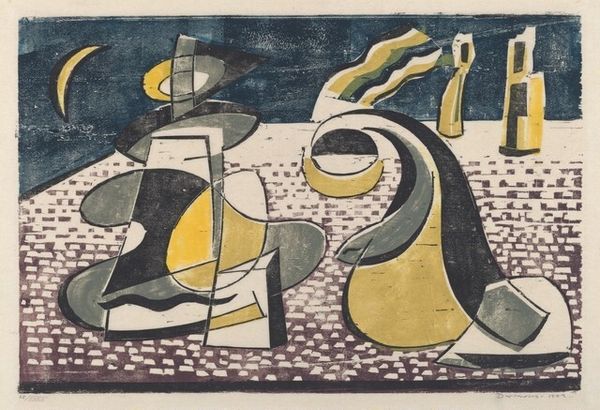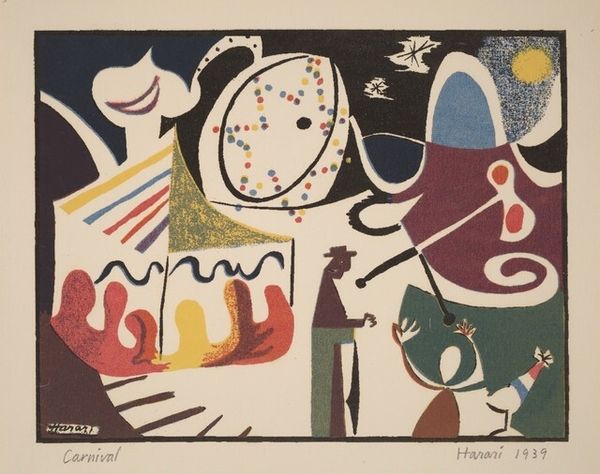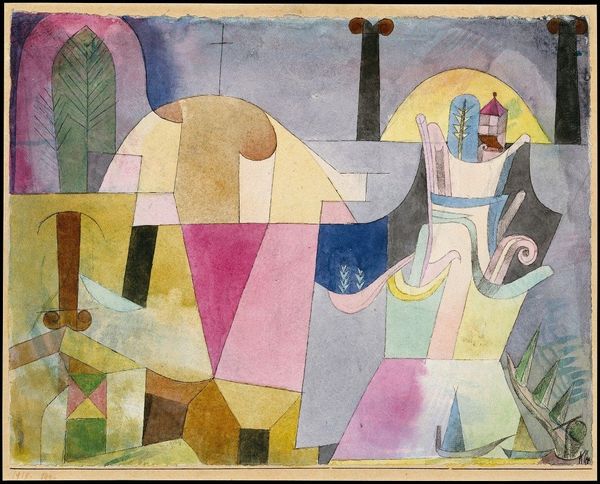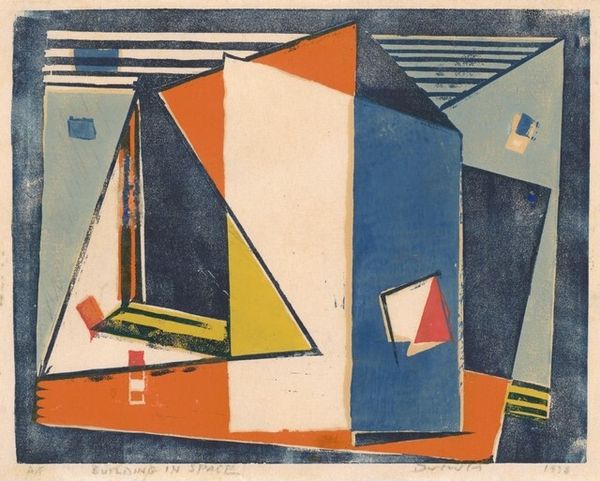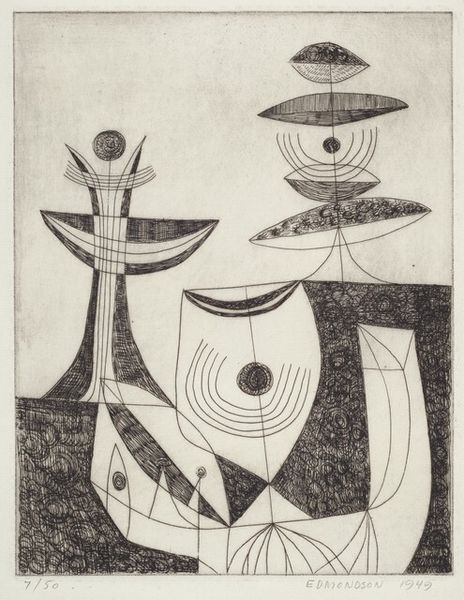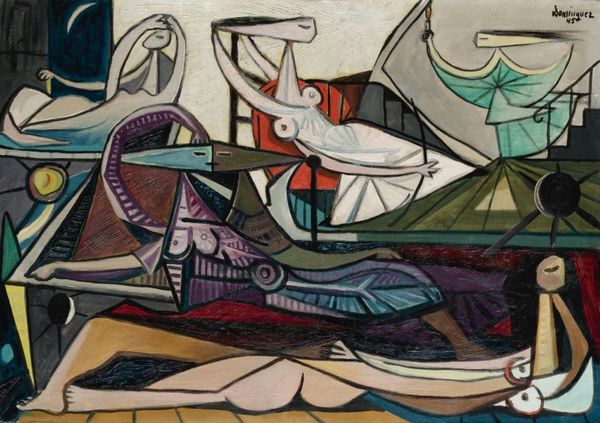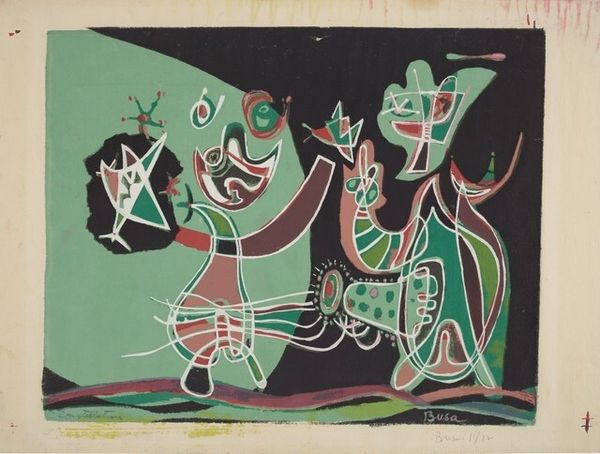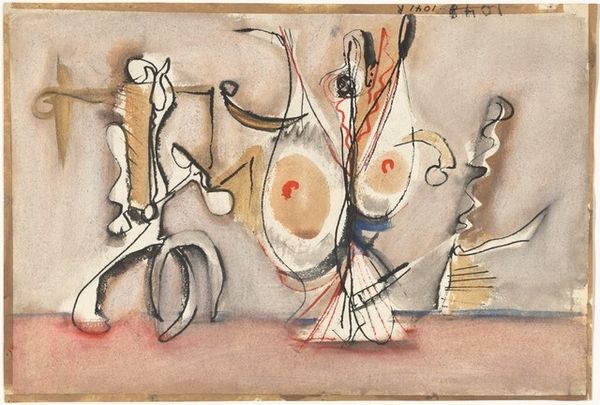
coloured-pencil, print, watercolor
#
coloured-pencil
#
water colours
# print
#
figuration
#
watercolor
#
coloured pencil
#
geometric
#
abstraction
#
watercolour illustration
#
modernism
#
watercolor
Dimensions: image: 116 x 193 mm sheet: 136 x 205 mm
Copyright: National Gallery of Art: CC0 1.0
Hananiah Harari made "Overseas" in 1940, using ink and crayon on paper. At first glance, it seems to represent a ship at sea, but the artist has rendered the ship as a series of abstract geometric shapes. This abstraction allows the work to connect to the social and cultural context of the time in which it was made. Harari's composition creates meaning through its engagement with European modernism, and with a specifically American form of social realism that was popular during the Depression. The artist emigrated to the United States from Palestine in 1921, so the idea of traveling "overseas" and of cultural hybridity was likely to be an important theme in his work. By stylizing his image in a modernist style, the artist is placing the idea of migration into the context of international developments in the art world. The image comments on the social structures of its own time by placing emphasis on global themes. As historians, we can better understand this artwork by researching the biographies of American Jewish artists. It is through this kind of research that we can start to reflect on the meaning of art as something that is contingent on social and institutional context.
Comments
No comments
Be the first to comment and join the conversation on the ultimate creative platform.
